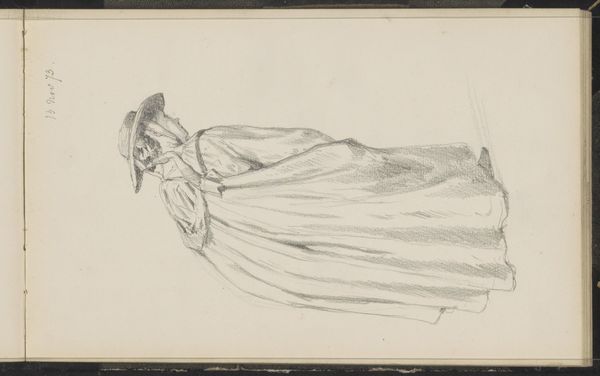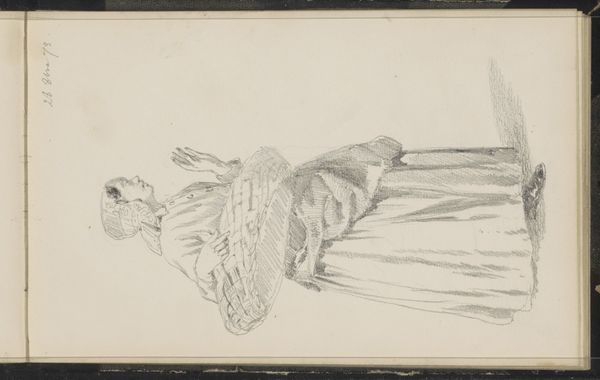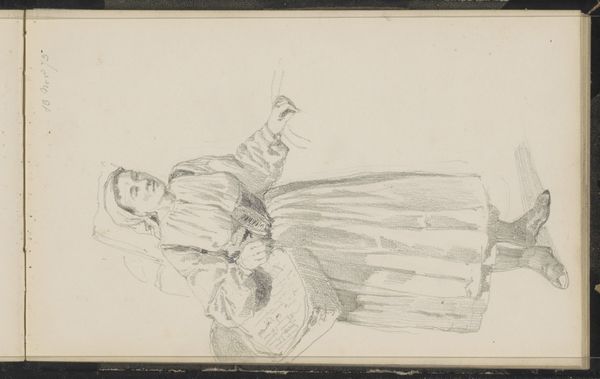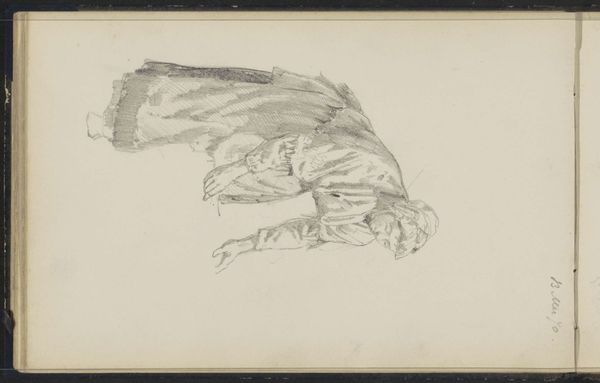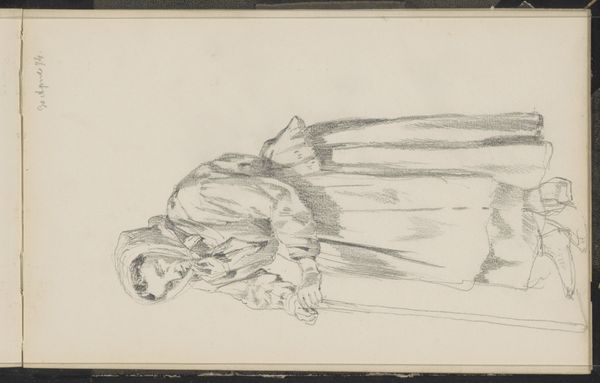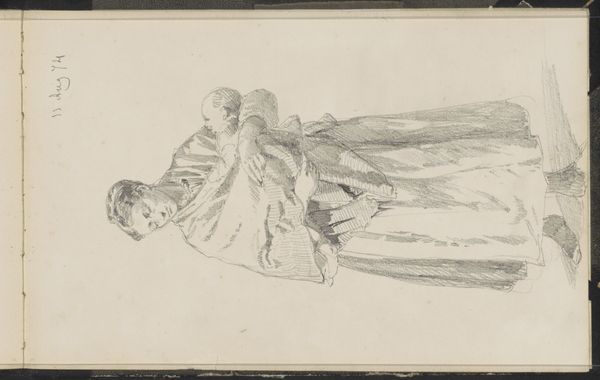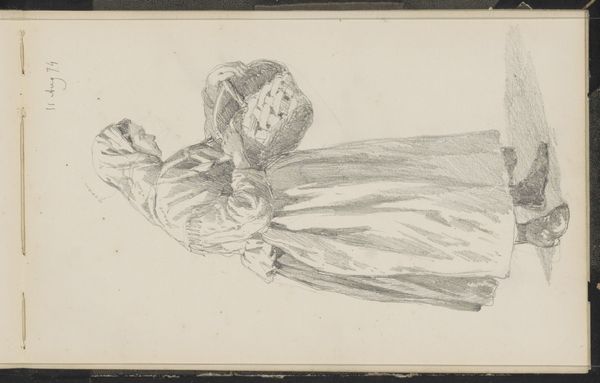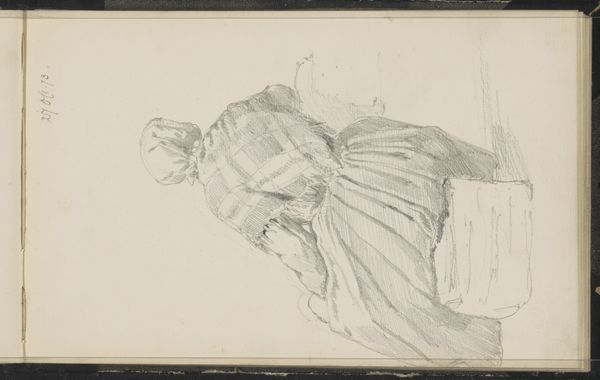
drawing, paper, pencil
#
portrait
#
drawing
#
pencil sketch
#
paper
#
pencil
#
genre-painting
#
profile
Copyright: Rijks Museum: Open Domain
Curator: Here we see a drawing titled "Vrouw met een voorwerp, mogelijk een aardappel," which translates to "Woman with an object, possibly a potato." It’s attributed to Cornelis Springer, likely created around 1873. Editor: It feels so…earthy. Not just because of the suspected potato! There's something almost brutal about the realism. Raw, humble materials portraying raw, humble life. Curator: The tentative title reflects a very interesting aspect here, a point of cultural insight, perhaps. Is it truly a potato? The lack of certainty makes one think about sustenance, about rural life. Notice how Springer uses subtle lines to indicate her gaze, possibly representing introspection. Her clothes feel both voluminous and confining. The sketch could evoke many narratives from the period. Editor: It makes me think about labor. Look at the economy of line, the clear delineation of the folds in her dress – it speaks to quick observation, but also, perhaps, the artist’s familiarity with the materiality of that cloth, the work involved in its creation. The lines don't flatter. It's an unsentimental depiction, possibly focusing on her actual garments rather than portraying class status. Curator: Right, and the covered head and downward glance—hallmarks of a genre painting – can symbolize modesty but also, constraints and piety. Consider the enduring archetype of women connected to nature. Is there commentary here on women’s roles through social symbols? The ambiguity makes one reflect on what the common symbolism associated with this depiction of woman implies about women of the time, the artist, and our current understandings. Editor: I agree completely. I think analyzing the paper itself, a humble material that might be cheap and available, contrasts dramatically with the finished, varnished canvases hanging elsewhere. It elevates that labor, the lives of everyday people. Curator: Yes, and in seeing the materials for what they are, it may connect us more deeply with these moments that history is built from. It causes a deeper and more truthful appreciation for how symbolism truly comes into its social contexts. Editor: Ultimately, a reminder that every artifact has a story embedded in its means.
Comments
No comments
Be the first to comment and join the conversation on the ultimate creative platform.
